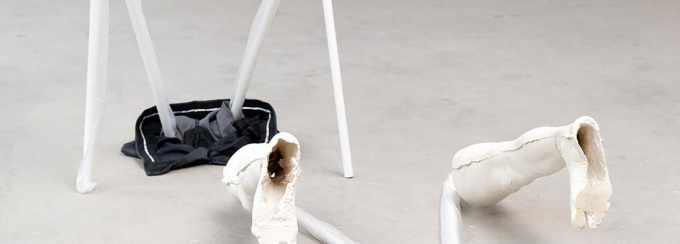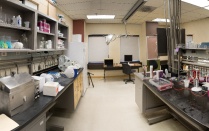IN THE NEWS
Jean-Charles de Quillacq

Corporeal Commons
In partnership with the Coalesce Center for Biological Art, University at Buffalo, and the Bemis Art Center, Omaha
October 10 to December 10, 2020 and February 01 to March 31, 2021
Thanks to this two-part residency, Jean-Charles de Quillacq will develop his thoughts on corporeal substances and secretions, especially sweat. Happening at a pivotal moment in his artistic trajectory, the residency is an opportunity to imagine surprising new perspectives, to deepen an essential part of his research, and to dare to take a truly transformational, unexpected sidestep.
While De Quillacq is interested in all corporeal substances and secretions, he is particularly interested in perspiration because it is concentrated in the body’s most permeable zones, while being secreted within the skin of almost the entire body of all humans, regardless of sex. It is common to all genders, to all identities. It is also the visible manifestation of our reactions to both internal and external factors, highlighting the porosity of our bodies and presenting them as filters, penetrated in two directions. The image of a filter led him to a form akin to those he has been producing for a long time, almost mechanically: Using the simple and repetitive gestures of tubes or organs that constitute conduits, like real pipelines, of fluids of an uncertain nature. Self As Tube: “Human beings are tubes. From a strictly physical point of view, we are dark, humid, coiled tubes with openings at the ends.” Fever, internal injuries, infections, intense emotions or stress, the confined atmosphere of the subway and heatwaves trigger the same processes and reactions in all of our bodies. With global warming, these shared processes and reactions take on an imminently collective, even generalized dimension. Sweating thermoregulates our bodies, lowering their temperature through humidification. Perspiration plays the same role as the cremaster muscle when it relaxes, allowing the testicles to lower and cool down to ensure the production of sperm. Matthew Barney titled his films, The Cremaster Cycle, after this muscle. Some sweat-producing glands—those under the armpits, around the anus and nipples, for example—are activated at the onset of puberty by the hormonal system. They are therefore part of our sexual attributes. It has been said that deep human attraction is often triggered by our scents. Thus, bacteria is intimately linked to our sexuality because it gives perspiration its scent, our smell. A human and non-human aroma since our bodies contain many more bacterial cells than human ones. Sweat is mainly made up of water and salt but also contains plasma, lactic acid, urine, toxins—including lead and mercury—and plastic. These elements bring De Quillacq back to the material of his work, the evocation of toxicological poems that de-hierarchize realms and genres. He believes that the phenomenon of perspiration and the substances of sweat manifest themselves to our senses and consciousness in many places today, both physically and psychologically. Sweating, as one of the signs of our times, is to become the subject of his study: he will explore its realities, processes, and materials during his residency in two phases.
At the Coalesce Center for Biological Art in Buffalo, New York: Focusing on different dimensions of sweat (chemical, physiological, and legal), he will work to develop and fabricate artificial liquids that synthesize his own perspiration, growing bacteria associated with certain odors and/or designing fermentation systems for these bacteria. One of the objectives of his first research phase is to find a way to develop and maintain synthetic sweat, a perfume or watery liquid, and to test its interactions with different materials under variable conditions. By extension, he will also research the deodorant industry and the substances and materials developed to manage sweat, as well as breathable fabric and textiles technologically designed to keep the body dry and odorless.
At the Bemis Center for Contemporary Arts in Omaha, Nebraska: This two-month residency will give De Quillacq the opportunity to experiment with various sculpting materials, techniques, and protocols and to test out various installation strategies.
Jean-Charles de Quillacq
Born in 1979, Jean-Charles de Quillacq studied at ENSBA Lyon and at Weißensee Kunsthochschule Berlin.
He develops sets of sculptures that are both conceptual and fetishistic. He often shows them by inviting other people to take charge of exhibiting them, accepting a certain loss of control over the potential deviations that these collaborations could cause.

